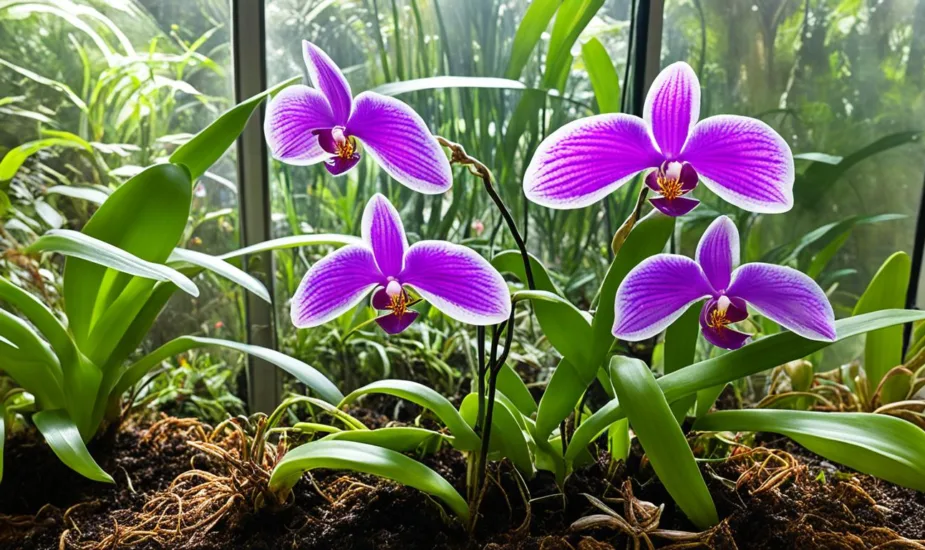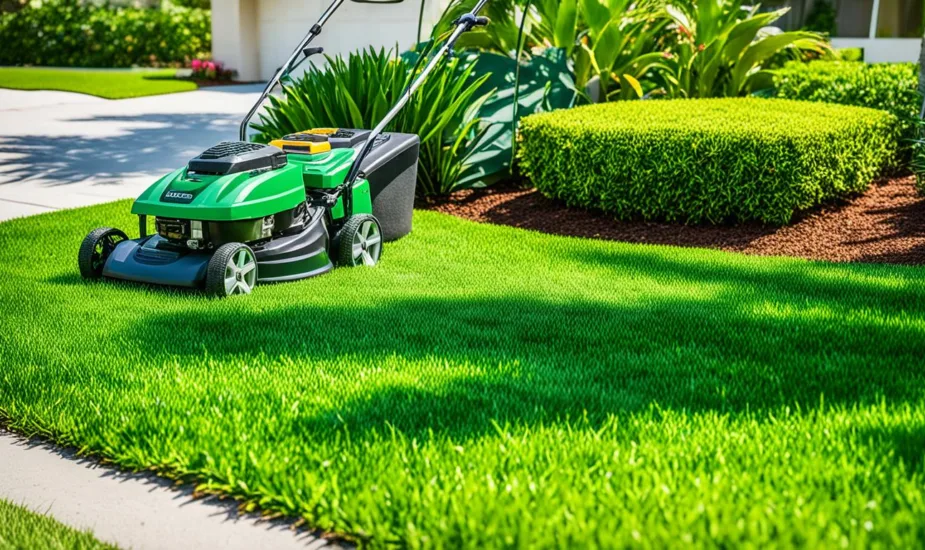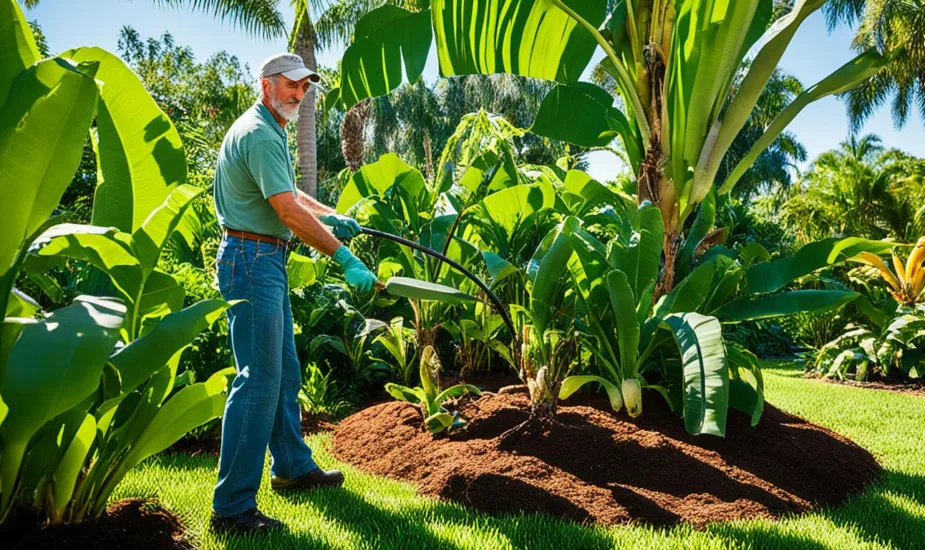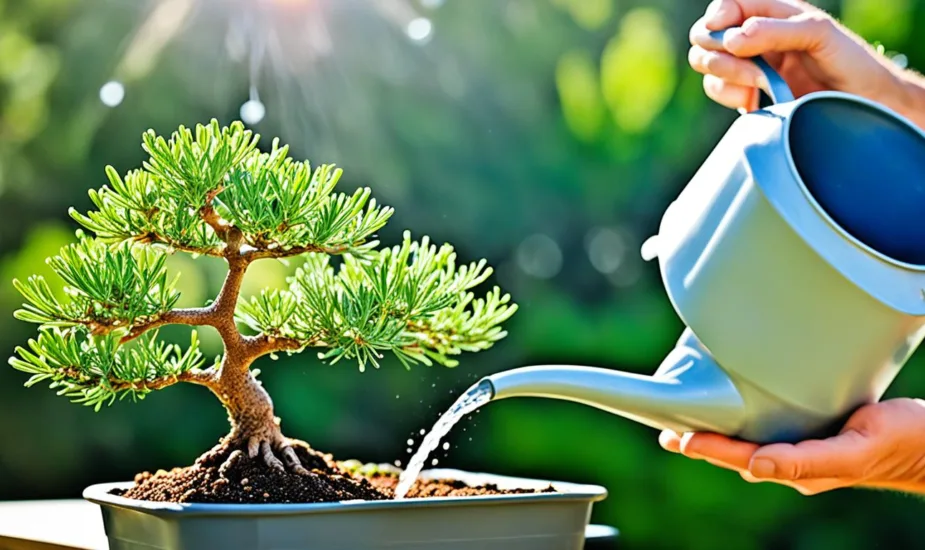Growing Up: How to Cultivate Tomatoes in Vertical Gardens
Tomatoes are a beloved plant among gardeners and consumers alike, but not everyone has enough space for a traditional in-ground tomato garden. That's where vertical tomato gardens come in. These gardens involve training tomato plants to grow vertically using supports like trellises, cages, and stakes.

There are several reasons why you should consider growing a vertical tomato garden. Firstly, they are more efficient in terms of space utilization and can produce more fruit per square foot. They also keep tomatoes dry, clean, and lifted off the ground, protecting them from pests and diseases. Additionally, vertical gardens provide better air circulation and sunlight distribution, making it easier to spot and exterminate potential pests. They also make it easier to harvest tomatoes and can be maintained both indoors and outdoors.
Key Takeaways:
- Vertical tomato gardens are an efficient use of space and can produce more fruit per square foot.
- Vertical gardens keep tomatoes dry, clean and protected from pests and diseases and provide better air circulation and sunlight distribution.
- Vertical gardens are versatile for both indoor and outdoor locations and make harvesting tomatoes easier.
The Advantages of Vertical Tomato Gardens
There are several reasons why one would want to grow a vertical tomato garden. Vertical vegetable gardening is a more efficient use of space and can produce more fruit per square foot. With a vertical tomato planter, you can take advantage of unused vertical space, such as walls or fences, to grow tomatoes. This is especially useful for those who have limited space for a traditional in-ground garden.
Container gardening tomatoes in a vertical garden is also practical in terms of pest prevention. Vertical gardens keep tomato plants dry, clean, and lifted off the soil, reducing the risk of pests and diseases. They also allow for better air circulation and sunlight exposure, making it easier to see and exterminate pests.
Vertical gardening systems are also easier to harvest. This is because the fruit is elevated and not lying on the ground. You can simply pick the tomatoes instead of having to bend over or kneel down to reach them. Moreover, vertical gardens can be maintained indoors or outdoors, depending on your preference and available space.
When selecting tomato plants for a vertical garden, it is recommended to choose indeterminate varieties as they will grow up the supports. Containers for vertical tomato gardens should be large enough to hold the plants and have good drainage. The location for the vertical garden should be warm, receive at least eight hours of sunlight, and be easily accessible for watering.
Overall, vertical tomato gardens are a practical and visually appealing way to grow tomatoes, particularly for those with limited space. Container gardening tomatoes in a vertical garden can provide a higher yield of fruit and make pest prevention and harvesting easier.

Selecting and Preparing the Right Environment
Vertical tomato gardens can be maintained both indoors and outdoors, making them versatile for different locations. When selecting and preparing the right environment for your vertical tomato garden, several factors need to be considered to ensure the best outcome.
The first step is to choose the right tomato plant variety. Indeterminate varieties are preferred for vertical gardening, as they continue to grow and produce fruit throughout the season. Once the plant is selected, the next step is to choose the container. The size of the container should correspond with the size of the tomato plant, with larger pots being preferred to provide ample room for the plants to grow.
Good soil drainage is crucial for growing tomatoes in vertical gardens. Ensuring that the containers have proper drainage holes and using high-quality soil with good drainage properties is important. Additionally, containers should be located in a warm, sunlit area for optimal growth and fruit production.
A vertical support system, such as a trellis or cage, is necessary to support the tomato vines. Different tomato trellis ideas can be explored, such as using stakes or string supports attached to a wall or fence. The support system should be installed prior to planting the tomato seedlings and adjusted to accommodate the growing vines as they climb.
Properly caring for the tomato plants is also important for a successful vertical tomato garden. This includes providing a nourishing environment with quality soil and fertilizers, regular watering, and pruning to prevent overcrowding and promote air circulation.
By following these tomato trellis ideas and selecting and preparing the right environment, you can successfully grow tomatoes in your vertical garden, both indoors and outdoors.
Planting and Supporting Tomato Plants
The process of planting and supporting tomato plants in a vertical garden involves careful planning. To start, choose a warm location that receives at least eight hours of full sunlight, whether you’re planning to keep your garden indoors or outdoors. Using a support system, such as a trellis, cage, or stakes, is essential for training the tomato plants to grow vertically, providing them with more space and better air circulation. Indeterminate tomato plants are ideal for vertical gardening as they have the ability to grow up support systems.
When selecting containers, ensure they are large enough to accommodate the plants and have good drainage. The distance between plants should be at least 10 feet, and the soil quality should be rich and nutrient-dense.
Transplanting the tomato plant is the next step. Gently remove the plant from its original container, being careful not to damage the roots. Fill the gap with nutrient-rich soil, and consider using mulch to protect the roots from drying out. Mulch also helps retain moisture in the soil, keeping the plant hydrated.
| Step | Description |
|---|---|
| Step 1 | Select a warm location that receives at least 8 hours of full sunlight. |
| Step 2 | Use a support system such as a trellis, cage, or stakes to train the tomato plants to grow vertically. |
| Step 3 | Choose a container with good drainage and fill it with nutrient-rich soil. |
| Step 4 | Gently transplant the tomato plant into the pot, making sure not to damage the roots. |
| Step 5 | Water the plant regularly and use mulch to protect the roots and retain moisture in the soil. |
Watering tomato plants is essential, and they require regular watering to stay healthy. Vertical gardening allows for better sunlight and air circulation, resulting in healthier plants and more fruit. Kits and DIY options are available for constructing vertical tomato gardens for those who want to embark on a fun and rewarding project. By choosing the right tomato variety and providing nourishing soil and regular watering, anyone can enjoy a successful and productive vertical tomato garden.

Proper Care and Maintenance
Watering is a key aspect of tomato plant care, especially in vertical gardens. Inadequate watering can lead to fruit splitting and poor plant health. It is important to find the right balance of moisture; too little can cause the soil to dry out, while too much can lead to root rot.
Regular watering is necessary for healthy tomato growth. When growing in containers, larger pots with good drainage and a location that can support the weight are recommended. The frequency of watering depends on the climate and soil conditions, but it is important to ensure the soil is moist but not soaked.
Proper planting involves installing the support system before planting and gently guiding the tomato plant to the structure. Quality, nutrient-rich soil is necessary for healthy tomato growth. Mulching can help retain moisture and keep the soil cool, reducing water loss and the risk of soil-borne diseases.
Regular care and maintenance are necessary for a successful vertical tomato garden. Pruning and removing suckers can help maintain plant health and prevent overcrowding. Pest and disease control measures should also be taken, including regular inspection and proper sanitation of equipment and containers.
Overall, a well-maintained vertical tomato garden can provide abundant and tasty homegrown tomatoes. With the right location, plant variety, soil, and care, a vertical garden can be a great option for those who want to grow tomatoes with limited space or for a more efficient use of space.

Tomato gardening tips: Find the right balance of moisture when watering tomato plants in vertical gardens. Ensure the soil is moist but not soaked, and use quality, nutrient-rich soil. Regular care and maintenance, including pruning and pest control, are necessary for healthy plant growth.
Conclusion
In conclusion, vertical tomato gardens are a great solution for those with limited space, offering various benefits and requiring careful planning and maintenance. By training tomato plants to grow vertically using a support system, such as a trellis or cage, gardeners can maximize their fruit production per square foot. Vertical gardens also help keep plants dry, clean, and lifted off the ground, reducing the risk of pests and diseases.
The proper air circulation and sunlight distribution in vertical tomato gardens make it easier to see and harvest the tomatoes. Determinate tomato plants are the better choice for vertical gardens, as they can grow up trellises and cages. When it comes to containers, larger pots are better for tomato plants, with good drainage and a water reservoir. The location chosen for the vertical garden should have at least eight hours of full sunlight, and the soil should have good drainage.
Watering is essential, and tomatoes require regular watering to prevent fruit splitting or plant death. The soil should remain moist, but not waterlogged, and gardeners should find the right balance based on the size of the container and the specific tomato plant variety. Proper nutrients and mulching can also help maintain plant health and enhance fruit production.
Overall, vertical tomato gardening is a rewarding and efficient way to enjoy homegrown tomatoes, even in small spaces. With the right preparation and ongoing care, gardeners can successfully cultivate their vertical tomato gardens and enjoy a bountiful harvest.
FAQ
Q: What are the advantages of growing tomatoes in vertical gardens?
A: Vertical gardens offer efficient space utilization, improved air circulation, easier pest control, and accessible harvesting.
Q: What types of tomato plants are suitable for vertical gardens?
A: Indeterminate tomato varieties are generally recommended as they continue to grow and require physical support.
Q: What containers should be used for vertical tomato gardens?
A: Larger pots are preferred, and reusing materials such as buckets or cans can be cost-effective. It is important to ensure containers have drainage holes and avoid dark-colored containers that can cause root overheating.
Q: Where should a vertical tomato garden be located?
A: A warm area exposed to at least eight hours of full sunlight is ideal. If indoors, using grow lamps can help maintain the temperature. Good soil drainage is also essential.
Q: How should tomato plants be planted and supported in vertical gardens?
A: Careful planning is required, including calculating spacing, installing the support system before planting, guiding the plants to the structure, and filling the gaps with nutrient-rich soil. Mulching can also be beneficial.
Q: What is important in the care and maintenance of tomato plants in vertical gardens?
A: Proper watering is crucial to prevent fruit splitting and keep the plant healthy. Finding the right balance between too little and too much water is key.
 Little Garden Tips
Little Garden Tips












